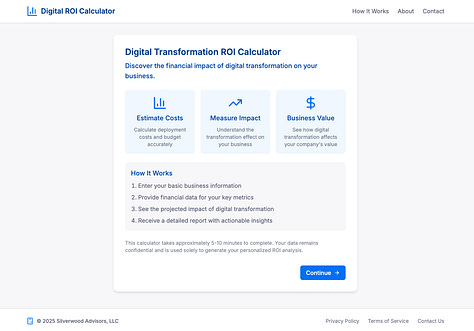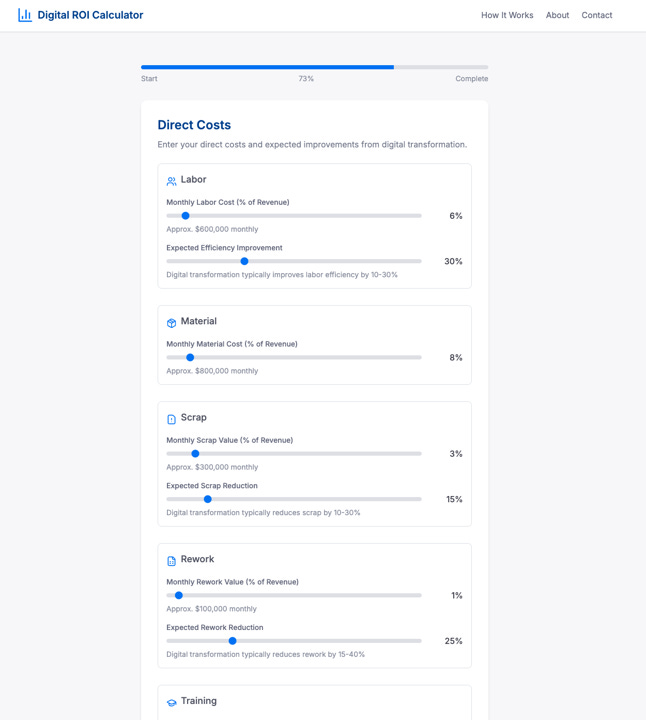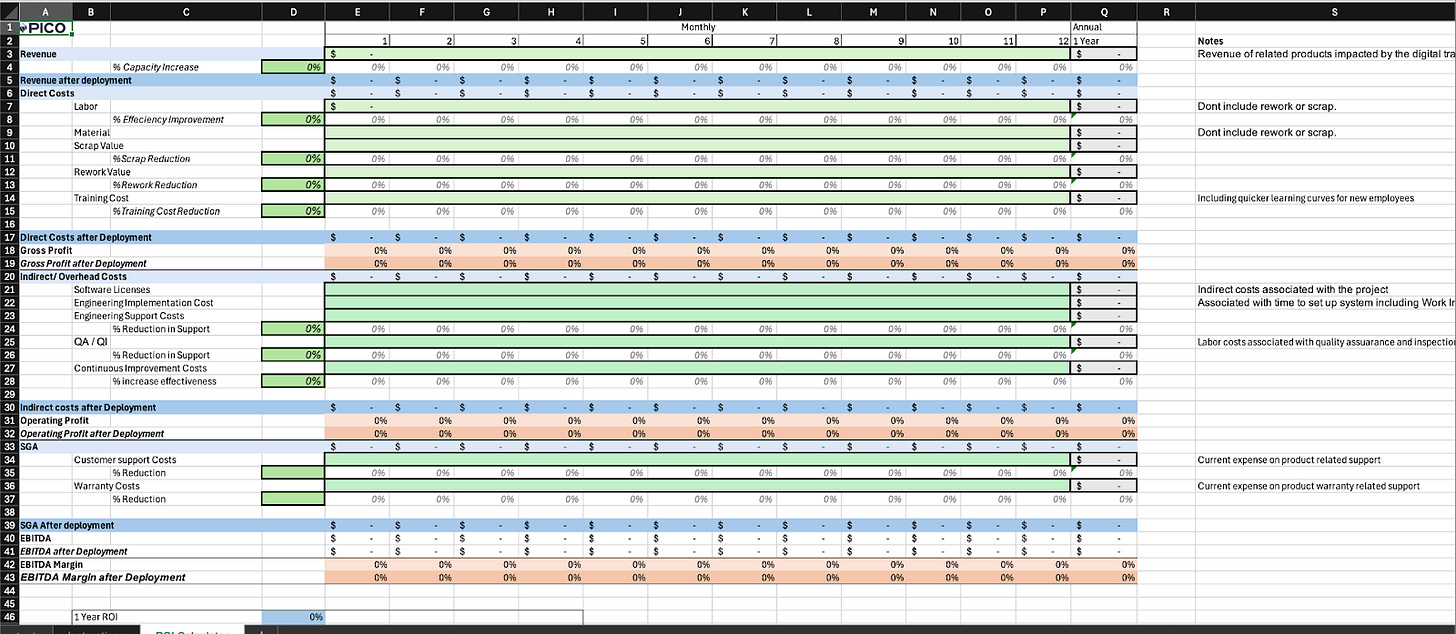You should play with vibecoding for GTM
How to use tools like Lovable, Bolt, Cursor and Replit to quickly build GTM leverage
👋 Hi, it’s Kyle Poyar and welcome to Growth Unhinged, my weekly newsletter exploring the hidden playbooks behind the fastest-growing startups.
Once I started using vibecoding tools like Lovable and Replit, I quickly got hooked. There’s frankly so much power available even for non-technical folks (very guilty!) to build lead magnets, prototypes, landing pages… you name it. (Lovable’s Product Hunt clone, Launched, is still a personal favorite GTM vibecoding example.)
When I polled readers about their favorite GTM use cases for vibecoding, the response was, well, mostly crickets. It’s time to change that.
For help I turned to Alex Shartsis, an early-stage GTM leader turned founder who’s borderline obsessed with the topic. Alex has led GTM at startups like Drawbridge (acquired by LinkedIn) and TripIt (acquired by Concur). He also founded an AI pricing startup back in 2013. You can catch Alex’s newsletter, Seed to Sequoia, and check out his new app for automating outbound email campaigns, Skyp.
I’ve advised a lot of founders on GTM over the years, and done a lot of hands-on GTM myself. While GTM has always been changing fast, today it isn’t just more emails, better emails, faster emails — it’s totally new approaches.
The AI coding tools (some call it “vibecoding”) have changed GTM. GTM leaders and doers no longer need to be at the mercy of their engineering teams or agencies. They can get stuff done at a high level themselves.
I’ll walk you through a tactical breakdown of an actual project I built recently using these AI coding tools, along with recipes for you to do something similar.
A quick primer: AI coding is different from automation
Kyle already published a great piece with Brendan Short about automating GTM plays. Clay and other tools are great for automating these plays because they enable anyone to avoid coding, but still set things up as an “if this, then that” logic: If this form gets filled out, then send that lead to sales.
AI coding means building your own tools from scratch. It’s much bigger – people have built actual web products. A React website. A Python scraper. You don’t even need to know what coding language React uses to do this (and I’m not gonna tell you!).
There are lots of ways to generate code using AI, from asking ChatGPT or Claude to write you some code to installing Cursor or trying Bolt, v0, Replit or Lovable in a browser. You can do much of this with any of those tools, though some are better at certain tasks than others.
Why not just have ChatGPT or Claude write the code for you? These tools do way more than just write the code. They help you set up the environment in which the code runs. Yes, you could have ChatGPT walk you through that process, but the point is to get to value in one or two hours, not days. Bolt will even host the site for free on its own Netlify account (a cloud hosting service for websites).
By leveraging these tools you can, as a non-coder, get code actually running for the world to see in hours, no prior knowledge required.
My task: Build a 🔥 ROI calculator in <2 hours
I was advising Pico MES, a Series A vertical SaaS company for manufacturing, and we noticed a glaring GTM problem. They had a detailed ROI spreadsheet for sales, but it was the kind of thing that made prospects’ eyes glaze over.
Selling to manufacturers had proven to be challenging even with a bunch of A-list reference customers and a great product. This was because the person using the product was almost never the person with the budget, and culturally justifying the budget required digging into complex numbers.
So they built the ROI spreadsheet. The content was good (impressive even), but like most spreadsheets, it wasn’t interactive or trackable. And it wasn’t strategic in its framing, burying the real value in lots of numbers.
It was so bad the CEO didn’t even want to open it to show me for this project. Here’s the actual file:
It’s actually not terrible for Excel. But we wanted something better that could:
Reframe the value in terms that matter to execs and owners (e.g. exit multiple, not just OPEX savings)
Capture emails and company information
Engage prospects in a live sales call and get them to open up
Look great on a screen share
Be usable without having to bug the finance team
I used Bolt.new, which can turn prompts and spreadsheets into functional React apps. From start to finish, it took maybe two hours. The first working version was done in an hour (but then I got all perfectionist with it).
Here’s what I gave it:
The original spreadsheet (a screenshot)
The README/instructions for how it worked, on a tab in that spreadsheet (a second screenshot)
A pretty lengthy initial prompt (typos included, below)
What it produced was surprisingly good. It’s live here and screenshots are below.







The final output had a clean, step-by-step UX. It auto-generated valuation math tied to an adjustable EBITDA multiple. There were clear callouts on things like capacity increases, cost reductions and valuation lift. It had optional email capture upfront (we added Slack/email alerts for new leads). And, most importantly, it told the story visually.
Instead of “Can I email you this model?”, now it’s “Want to plug in your numbers together and see what impact Pico will have on your valuation?”
Even without a HubSpot integration, it worked. Because it became a GTM conversation tool—not just a calculator.
My recommendations for doing this yourself:
Provide context for the coding agent: Your first prompt should include the spreadsheet (as a screenshot) and the instructions (as a screenshot or text) if you have it. Otherwise, explain in words how the calculations work. By telling the AI exactly the story you want to tell, and giving it case studies, you will get a better designed flow. My prompt is below.
Give the coding agent very explicit instructions. “This is for manufacturing operators evaluating Pico MES. We want to focus on what it does to EBITDA and exit value because that is what they care about.”
Be very clear and specific about inputs and outputs, target audience and branding. I told it to mimic the PicoMES branding and look and feel and it did a great job.
The first prompt is not the place to try to do everything imaginable. For example, I did not tell it to build a tool to export or download the output into a CSV–easy to do, but the more you give it up front the less likely you get something that actually works the first try.
Here’s the recipe, feel free to try it yourself:
Build an ROI calculator. It should match the look and feel of picomes.com. Here are the instructions for it and a screenshot of the Excel version. Ask questions one or two at a time, like a typeform, rather than all at once. It should start with a page introducing itself and telling of its value. Then the user enters their email (and confirms it). For now we can set up a supabase to track this and other responses. Then we would list the general stuff they would need. Allow them to progressively answer questions, and save progress as they go. The questions should start with do you plan on selling your business in the next 10 years? (they can skip this question). If yes, they should be asked when they expect to sell. Then at the end it should present how much extra profit they would make before they sell (eg if it's $500,000/year and they're selling in 4 years, $2mm) and then use a multiple of 11x Ebitda (that is a variable they can change) to show how much more their company would be worth if they use our software.
If you’re a regular reader of this newsletter, I’m sure I don’t have to explain the benefits of this tool over a spreadsheet. It looks like a million bucks! And the prospect that walks through this with you or your salesperson is not only impressed by how amazing this is (and assumes whatever you’re selling is just as amazing), but also is much more forthcoming with information.
When I showed the ROI calculator project to the founder of Pico MES, he was blown away. He said his HubSpot agency would have charged him $10k for something like this and taken a month to build it, if they even came back with something usable. Here was an amazing looking tool his sales team could use right now, ready in a few hours.
Seven other vibecoding ideas for your GTM
I see dozens of GTM vibecoding use cases that could not only save you time, but give you a speed advantage over competitors. Here are seven of my favorites to get started.
Keep reading with a 7-day free trial
Subscribe to Kyle Poyar’s Growth Unhinged to keep reading this post and get 7 days of free access to the full post archives.





